HYDRA Vulgaris In Vaxxes; Will Betel Nut Work to Rid Your Body of This Parasite?
https://odysee.com/@TimTruth:b/Hydra-vulgaris-moderna:b
Betel Nut
OTHER NAME(S): Arec, Aréca, Areca catechu, Areca Nut, Areca … Show More
Overview
Betel nut is the nut that comes from a plant called Areca. It is sometimes used to make medicine. Betel nut is chewed alone or in the form of quids, a mixture of tobacco, powdered or sliced betel nut, and other ingredients.
Betel nut is used for schizophrenia, a group of eye disorders that can lead to vision loss (glaucoma), poor digestion, and many other conditions, but there is no good scientific evidence to support these uses. Using betel nut might also be unsafe.
Some people use betel nut as a recreational drug because it speeds up the central nervous system (CNS).
How does it work ?
Betel nut seems to affect certain chemicals in the brain and other parts of the central nervous system.
How Betel Nut is Used to Eliminate Hydra Vulgaris in Aquariums
Last update: August 10, 2021
How to Identify and Destroy Hydra in Aquarium (In Just Days)
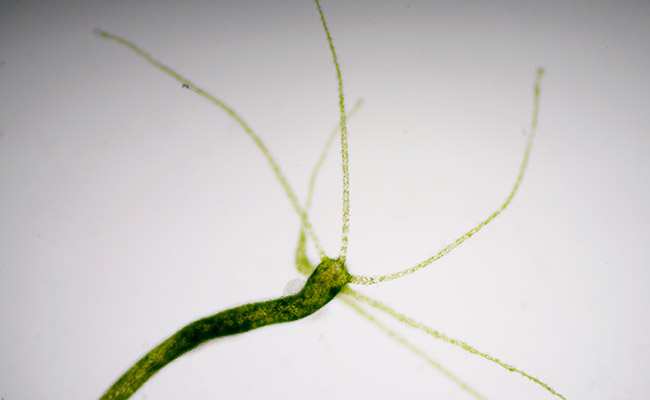
HOME » BLOG » HOW TO IDENTIFY AND DESTROY HYDRA IN AQUARIUM (IN JUST DAYS)
If you are a Greek mythology buff, or just enjoyed Disney’s Hercules, you are all too familiar with the hydra.
Every time a head was cut off of this fierce mythical beast, two more would grow in its place.
What does this have to do with your aquarium?
Well, there is an aquarium pest that shares the same name. And, as you will learn, it’s equally ferocious.
In fact, this might be one of the strangest creatures that will ever enter your aquarium.
Today, I am going to teach you all about hydra and how to get rid of it before it harms your fish.
What is a hydra? (And how to identify it!)
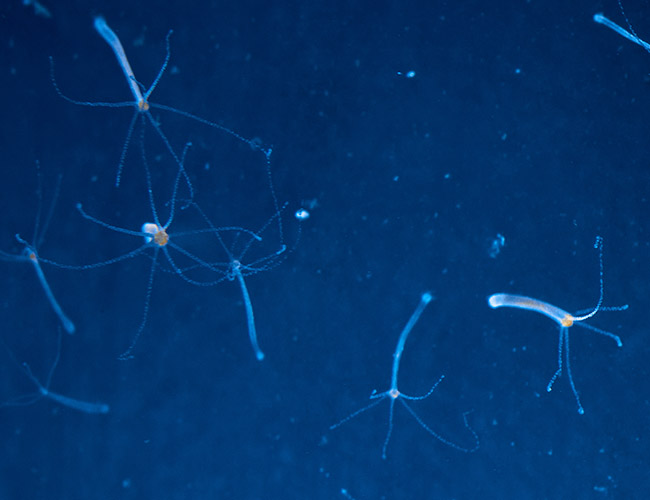
A hydra, sometimes referred to as a freshwater polyp, is a small, jellyfish-like creature. And at first glance, a simple one at that.
Measuring just millimeters, the hydra is made up of a tube-like body, half-a-dozen tentacles on top and a sticky foot to hold it in place.[1]
Typically, hydras are a brown, green or off-white in color – although you might need a magnifying glass to tell. These things are small!
The easiest way to identify hydra is to touch it. Don’t worry, it won’t hurt you.
You see, hydra flinch and curl into a ball when threatened. Touching them stimulates this response.
While hydras are typically found in freshwater tanks, there are marine variants (Aiptasia), and they are just as deadly…
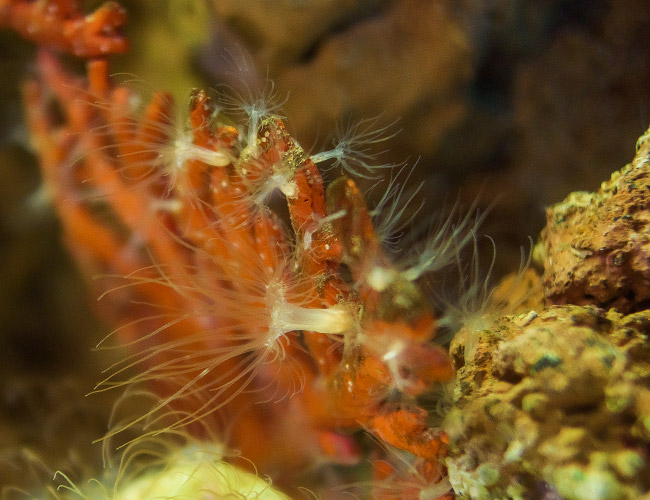
Saltwater or freshwater… no aquarium is safe from hydras!
One or two hydras are like ninjas. If they set themselves up on a plant of a similar color, they can easily be missed.
I usually first notice a hydra outbreak when they cling to the glass or a black surface, where their color and odd shape makes them stand out. Unfortunately, hydras are happy to cling to almost any surface in your aquarium – plants, wood, rock or even your sponge filter.
While they may be hard to spot at first, you will soon know if you have hydra problem because these things multiply… Quickly!
In fact, if you find one hydra in your tank, you can bet that you will soon see more. You see, hydras reproduce by budding.
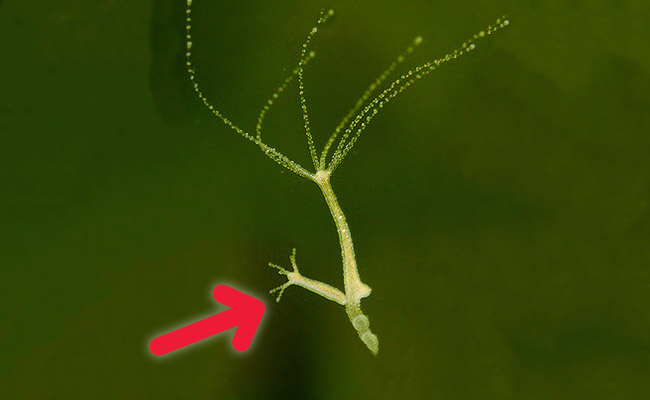
You see that branch at the base of the hydra?
Well, that’s actually a bud. And once it gets big enough, it will break off into another hydra. And, this new hydra is also capable of budding.
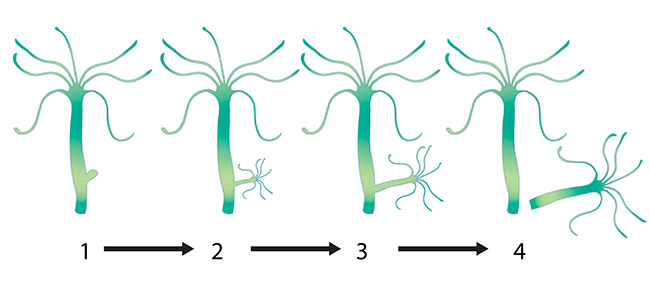
No wonder these things spread so quickly – what starts off as a single hydra can soon become hundreds.
And, they can move!
While hydra often stay in one spot, don’t be surprised if you see them roam around your tank to find a better location.
They will do this in one of two ways…
1. Using their tentacles and suction-cup like foot to inchworm or somersault across a surface, allows the hydra to move almost 10 inches in a day.[2]
2. For longer distances, hydras release their suction-cup like grip on the surface below and allow the current to take them to new location in the aquarium.
Despite being able to move, hydra do not “hunt” your fish. Instead, they wait for prey to venture too close before attacking with their tenticles.
And, it’s these tentacles that make hydra so dangerous.
Especially to small fish.
The stinging tentacles that dance back and forth in the water pack a deadly wallop – allowing a hydra to kill fish many times its size.
Below, you see a hydra eating a baby minnow that it killed with its venom.…
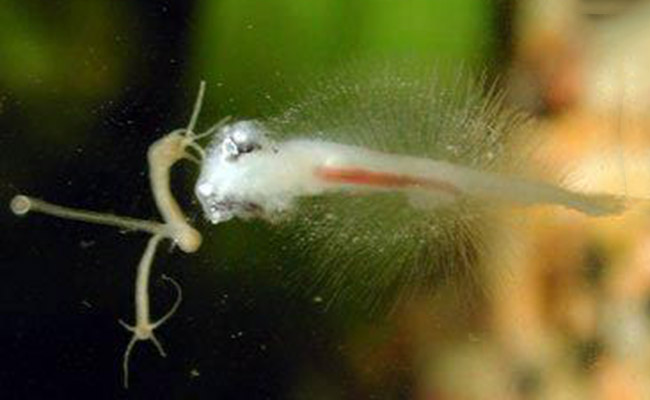
As you can imagine, these things are the scourge of fry tanks. Baby shrimp, fry and other small fish are the perfect meal and don’t stand a chance if they come near the hydra’s toxic tentacles.
If you feed your fish live food, then hydra can also be a problem since when you feed your fish, you are also feeding the hydra – encouraging their growth. Live foods, like daphnia, are a tasty meal to a hydra.
If you have larger fish, then you don’t have to worry about hydra at all – they are a small fish predator only. To a big fish, those tentacles won’t even tickle.
Oh, and just when you thought this tiny terror couldn’t get any more strange…
Scientists have discovered that the hydra doesn’t age – leading some to believe that it could unlock the secret to humans living forever.[3]
While this creature might be the most interesting thing in your tank, you want it gone – for the sake of your fish.
How do hydra get inside your tank?
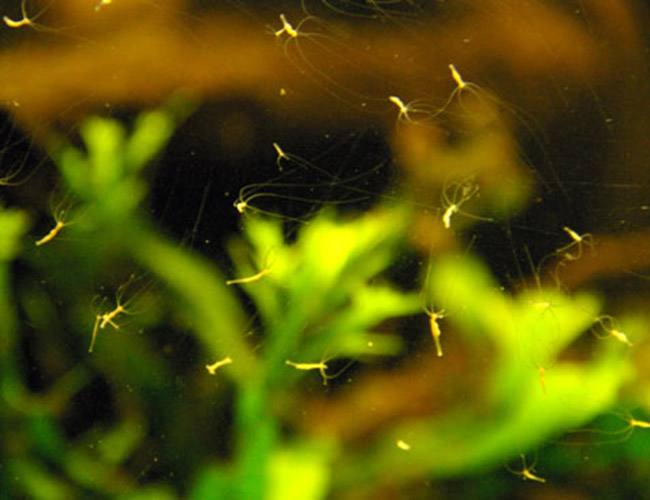
It feels like hydra just appear out of nowhere, right?
Don’t worry, I can assure you that isn’t the case.
So, where do hydra come from?
Well, it turns out they had a little help from you.
Like snails, hydras sneak into your tank by hitchhiking. Hydras are expert stowaways and are virtually unnoticeable on new plants that you add to your tank.
Hydra can also sneak into your aquarium along with water from a fish bag. When hydra withdraw their tentacles and close up, they look like a floating piece of sand.
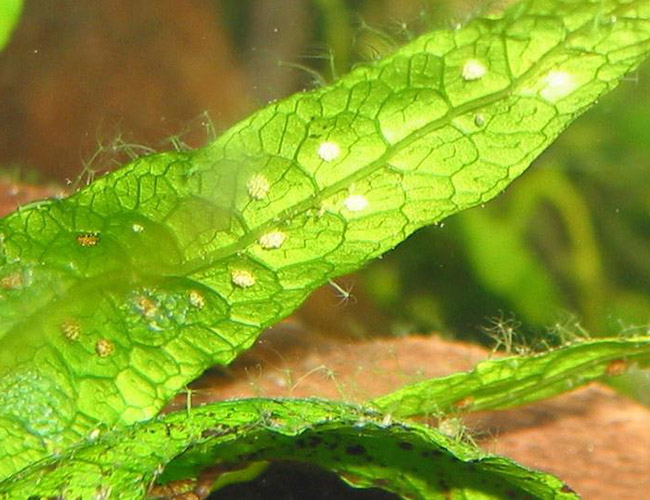
Pre-treating your plants can help prevent hydra from appearing in your aquarium.[4]
But even if you take the utmost care, you shouldn’t be too surprised to experience a hydra infestation in your aquarium – they are darn resilient.
If it’s too late to prevent hydra, then there is just one thing left to do. Get rid of them…
How do you get rid of hydra?
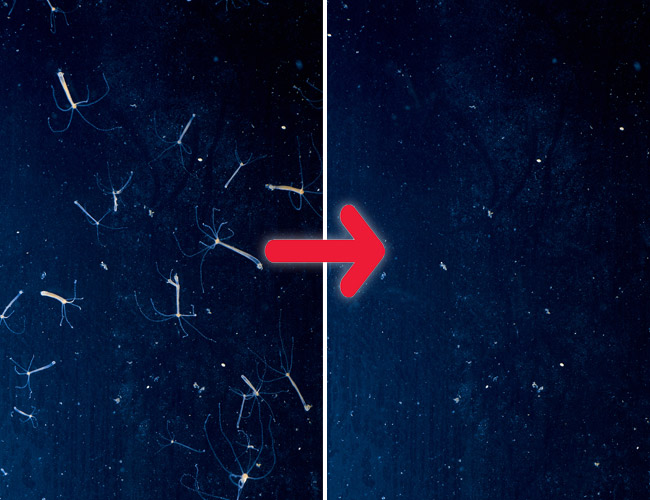
So, you want your hydra bloom gone, and you want it gone now?
Say no more. Below I list three methods of killing hydra that actually work.
1. Manual removal
If you notice just a few hydras on the glass of your aquarium, you can remove them manually. Carefully wiping with a sponge easily removes a small patch of hydra from a smooth surface.
But be particularly careful that you do not leave any pieces behind…
Because if you cut a hydra in half, it can grow into two separate hydras. That’s right, any small piece of hydra can grow into a new hydra.
Manual removal can be difficult if your hydra infestation is covering an irregular surface, such as plants or rocks. And if you have a large hydra population, then it’s time to call in the big guns….
2. Chemical removal
To be honest, this is my preferred method of removing hydra. Over just a few days, the hydras in your tank will begin to wither and die.
And to do the job, I keep a pack of this near my tank at all times…
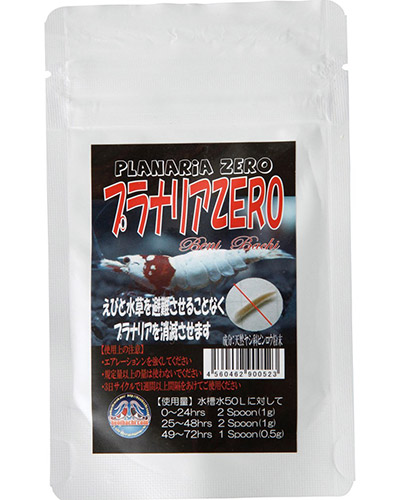
Ignore the name, this stuff will not only kill planaria but also any scutariella and hydra.
I was introduced to this product by a fish store in Japan, who used it as a shrimp-friendly hydra remover. This product is one of the best-kept secrets in fish keeping – why we don’t have a dedicated supplier in the United States is beyond me.
The secret ingredient in Planaria Zero is betel nut extract – a natural hydra killer. From all accounts, it’s a much safer alternative to other hydra-killing chemicals. Much safer for your tank than Panacur C and other doses of Fenbendazole.
Designed to be friendly for shrimp, using Planaria Zero is incredibly simple. My only gripe is that the instructions are in Japanese, and to make it even more confusing, there seem to be two sets of instructions floating around the internet.
Here’s what worked for me…
- Day 1 – add 1 spoon per 6 gallons of water in your aquarium
- Day 3 – add 1 spoon per 6 gallons of water
- Day 4 – perform a 20% water change
- Day 10 – add 1 spoon per 6 gallons of water
- Day 11 – perform a 20% water change
Just use the spoon included in the package and add the powder directly to the tank.
More often than not, I find that all the hydra die before the second dose.
Remove any carbon filters (or Purigen) during dosing because this can remove the Planaria Zero from the water before it has a chance to work its magic. I also make sure that I have plenty of surface agitation during treatment.
Oh, and be sure to remove any snails you want to keep. This magical white power can be lethal to those too! Malaysian trumpets and Nerite snails, in particular, seem to be affected.
Once done dosing, return your carbon filter to remove any remaining traces of Planaria Zero from the water.
3. Hydra predators
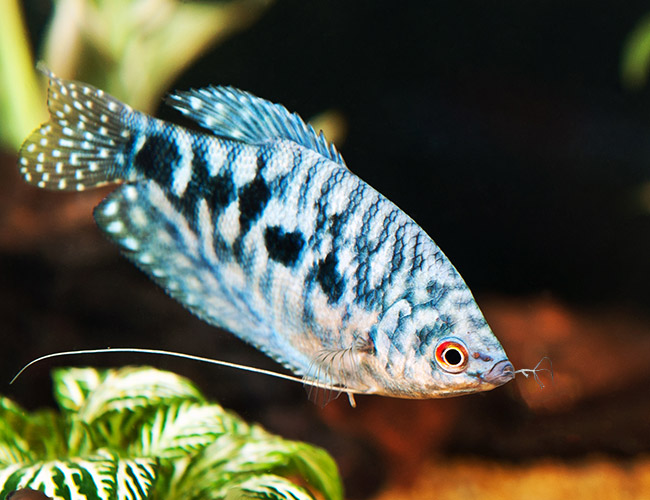
Another popular option for beating hydra is to add a hungry fish.
Without any effort on your part, these fish happily hunt down hydra. Your fish gets a tasty meal, and you get rid of your hydra invasion!
Which fish?
- Blue Gouramis
- Mollies
- Paradise fish
…Are only a few of the fish that have been known to feast on hydra.
Not feeling the fish? Pond snails will also happily seek out and destroy any hydra inhabiting your tank.
Just be mindful that once your hydra population is gone, this fish is another mouth to feed. So, make sure you have the right type of fish food on hand to keep your new addition happy and healthy.
Benibachi – Planaria Zero Another product, which uses Betel nut extract as the ingredient. Actually, it is very good against other parasites like Hydra as well. In a few days, it will get rid of all planaria.
Planaria and Shrimps. How to remove them. – Shrimp and …
aquariumbreeder.com/planaria-and-shrimps-how-to-remove-them/















